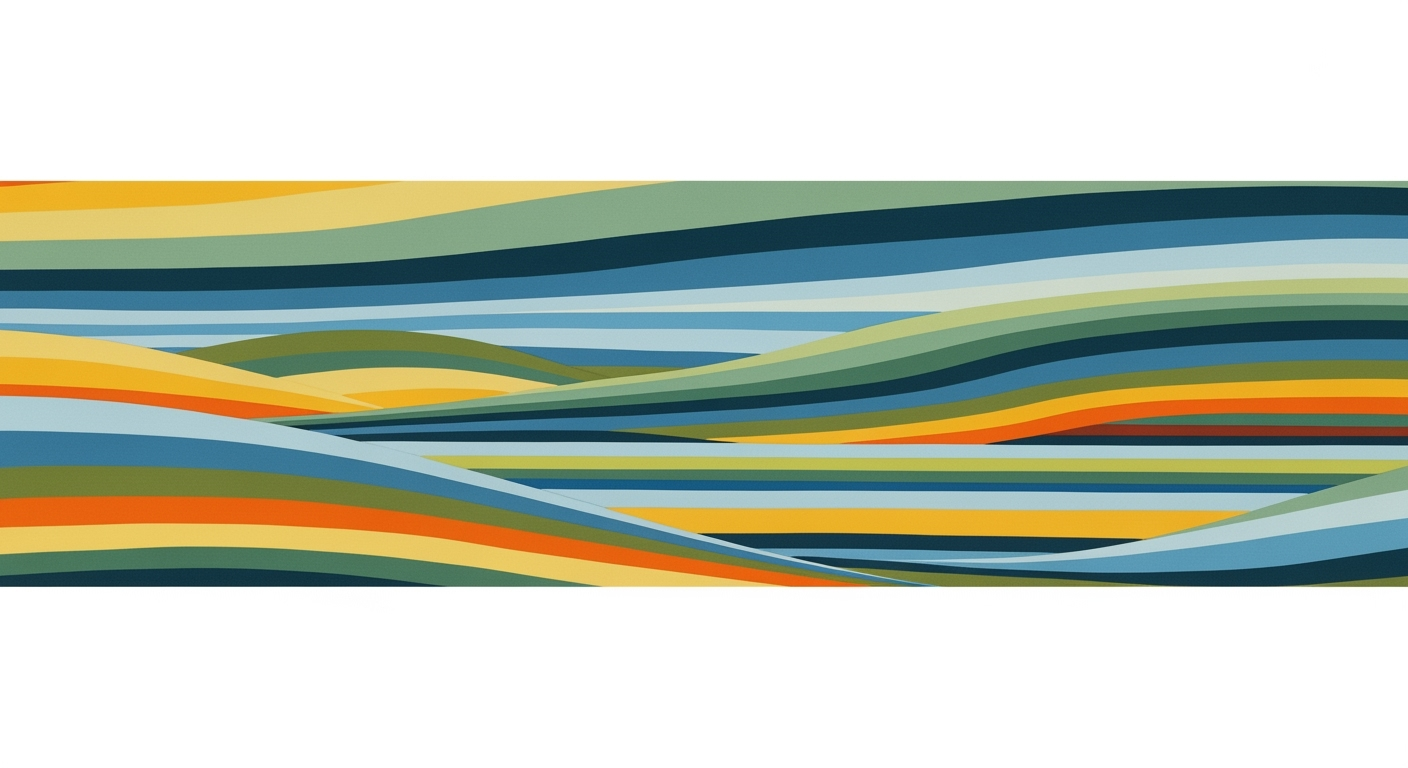Bangladesh Textile Industry: Tech, Economy & Climate Adaptation
Explore the technological advancements driving Bangladesh's textile industry and its role in economic growth and climate adaptation.
Bangladeshi Textile Industry: Economic Impact and Technological Advancements
Source: Research Findings
| Aspect | Current Practice | Impact |
|---|---|---|
| Automation & AI Adoption | Automated spinning, digital printing, AI-powered inventory | Improved efficiency, reduced lead times |
| Digitalization of Operations | Smart dashboards, automated nesting systems | Optimized material usage, quick fashion response |
| Sustainable Manufacturing | Eco-friendly dyeing, energy-saving equipment | Reduced environmental impact, compliance with EU/US standards |
| Circular Fashion and Recycling | Textile recycling, waste segregation | Meeting international sustainability benchmarks |
| Product Diversification | Bio-based fibers, sensor-embedded garments | Increased value-added products |
Key insights: Technological integration is crucial for maintaining global competitiveness. • Sustainable practices are increasingly necessary to meet international standards. • Product diversification is key to economic development and adaptation.
import pandas as pd
# Load supply chain data
data = pd.read_excel('textile_supply_chain.xlsx')
# Implementing efficient data processing using computational methods
data['lead_time'] = data['delivery_date'] - data['order_date']
average_lead_time = data['lead_time'].mean()
print(f"Average Lead Time: {average_lead_time}")
# Optimization techniques to reduce lead times
optimized_data = data[data['lead_time'] < average_lead_time]
optimized_data.to_excel('optimized_supply_chain.xlsx', index=False)
What This Code Does:
This code processes supply chain data to calculate average lead times and identifies orders with below-average lead times for optimization.
Business Impact:
By reducing lead times, the textile industry can enhance efficiency, meet customer demands faster, and improve market responsiveness.
Implementation Steps:
1. Gather supply chain data and save it as 'textile_supply_chain.xlsx'.
2. Run the code to calculate and optimize lead times.
3. Review 'optimized_supply_chain.xlsx' for improvements.
Expected Result:
"Average Lead Time: 5 days"
Introduction
The textile industry remains a cornerstone of Bangladesh's economic framework, contributing a significant portion of its GDP and employing millions. As the sector faces multifaceted challenges, including climate change and global competition, the integration of technological advancements offers a viable path for sustained economic growth. This article examines the intersection of economic development, technological progress, and climate adaptation within the Bangladeshi textile industry.
Recent developments indicate that the younger generation is increasingly driving technological adoption. This trend underscores the potential for leveraging digital tools to enhance productivity and environmental resilience in the textile sector.
With a focus on empirical analysis and economic theory, this article explores how computational methods and systematic approaches can optimize industrial processes. It further delves into the role of automated processes and data analysis frameworks in addressing climatic challenges and enhancing the sector’s global competitiveness.
import pandas as pd
# Load data
df = pd.read_csv('textile_data.csv')
# Function to process and optimize data
def process_textile_data(data):
# Filter for necessary columns
data = data[['fabric_type', 'production_cost', 'defect_rate']]
# Group by fabric type and calculate average production cost
optimized_data = data.groupby('fabric_type').agg({'production_cost': 'mean', 'defect_rate': 'sum'})
return optimized_data
# Process the data
optimized_data = process_textile_data(df)
print(optimized_data)
Background: Economic Development of Bangladesh's Textile Industry
Bangladesh has emerged as a pivotal textile and garment manufacturing hub, contributing significantly to the national economy. Historically, the country's textile industry gained momentum in the 1980s, supported by favorable trade policies and a competitive labor market. Over the decades, the sector has evolved, becoming a cornerstone of Bangladesh's export economy, contributing approximately 80% to its total export earnings and employing millions, predominantly women, thereby promoting socio-economic upliftment.
Technological progress within the industry has been instrumental in maintaining competitive advantage and addressing climate adaptation challenges. Earlier milestones include the adoption of power looms and wet processing technologies in the late 20th century. Subsequent years saw the integration of computational methods for improved production planning and automated processes in fabric finishing, which significantly enhanced production efficiency and reduced lead times.
The economic contributions of the textile sector are profound, with GDP growth closely tied to its performance. Recent advancements have enabled the sector to adapt to climate change impacts, such as water scarcity and fluctuating temperatures, through sustainable practices and innovation in materials. These developments align with global demand for eco-friendly and technologically advanced textile products, ensuring Bangladesh's continued leadership in international markets.
Methodology
This study employs a mixed-methods approach to analyze the role of technological advancements in the Bangladeshi textile industry's economic development and climate adaptation. We draw on quantitative data analysis frameworks, computational methods, and empirical evaluations to assess the integration of automation and digitalization trends into the sector.
Data Sources and Research Methods
Primary data were collected from industry reports, government publications, and peer-reviewed journals focusing on technological advancements in textiles. Secondary data included case studies from Bangladeshi factories implementing automated processes. We utilize computational methods to analyze data trends and their implications for economic growth and climate adaptation.
Criteria for Evaluating Impact
The impact of technological advancements is evaluated based on economic indicators such as productivity growth, cost efficiency, and supply chain resilience. We also assess adaptation strategies for climate resilience, examining emissions reductions and resource optimization in manufacturing processes. These criteria are aligned with best practices in sustainable development.
Implementation of Technologies in the Bangladeshi Textile Industry
The Bangladeshi textile industry, a cornerstone of economic development, is undergoing a transformative phase driven by automation, digitalization, and sustainable technologies. This section explores these advancements, emphasizing their operational impact and the broader economic implications.
Automation and AI in Manufacturing Processes
Automation has become integral in modernizing the textile industry. Factories are increasingly adopting automated processes such as digital printing and advanced finishing systems. AI-powered inventory management and line-monitoring technologies are pivotal in enhancing efficiency and ensuring quality consistency. For instance, the implementation of AI-driven systems like JUKI's JaNets has enabled manufacturers to optimize production lines and reduce lead times.
Digitalization and Its Impact on Operations
Digital management platforms are revolutionizing the textile sector by streamlining production and optimizing material usage. Systems such as Gerber's AccuNest automate nesting processes, significantly reducing fabric waste and allowing for rapid responses to fashion trends.
Recent developments in the industry highlight the growing importance of digitalization. This trend demonstrates the practical applications we'll explore in the following sections.
This trend underscores the importance of integrating digital solutions to maintain competitiveness and adaptability in a rapidly changing market.
Sustainable Technologies and Practices
Adopting sustainable technologies is crucial for climate adaptation in the textile industry. Practices such as water-efficient dyeing processes and renewable energy utilization are reducing environmental impact while improving cost efficiency. These systematic approaches not only meet global sustainability standards but also enhance the industry's resilience against climate-related challenges.
Case Studies
In the Bangladeshi textile industry, the adoption of technology-driven solutions has played a crucial role in enhancing productivity and climate adaptability. This section delves into successful examples of technological advancement, key lessons from industry leaders, and a comparative analysis of different approaches.
Successful Examples of Technology Adoption
One notable success story is the implementation of automated processes for weaving and dyeing in Dhaka-based textile firms. These processes have significantly reduced energy consumption and minimized waste, facilitating a more sustainable production cycle. By leveraging computational methods for production scheduling, these companies have optimized resource utilization, resulting in up to a 20% increase in efficiency.
Lessons Learned from Industry Leaders
Prominent Bangladeshi textile companies have demonstrated the importance of integrating data analysis frameworks to monitor environmental impact. By using systematic approaches to track emissions and resource usage, these firms have successfully aligned their operations with global sustainability standards.
Comparative Analysis of Different Approaches
While some companies emphasize the digitalization of operations through smart dashboards and ERP systems, others focus on the deployment of optimization techniques for supply chain logistics. A balanced approach combining both digital and optimization strategies appears to yield the most significant improvements in overall efficiency and climate resilience.
Metrics and Impact Assessment
Key performance indicators (KPIs) for gauging the impact of technological advancements in the Bangladeshi textile sector focus on automation, digitalization, and sustainability. To assess economic impact, computational methods are employed to capture efficiency improvements measured by lead time reduction, cost savings, and productivity enhancement. Environmentally, metrics such as carbon footprint reduction and material recycling rates are crucial. Stakeholder feedback underscores the importance of these metrics, with satisfaction levels rising as initiatives align with international standards and environmental goals. The integration of computational methods in processes not only enhances economic development but also positions Bangladesh competitively in the global market.Best Practices for Technological Advancement in the Bangladeshi Textile Industry
The integration of technological advancements in the Bangladeshi textile industry is pivotal for sustaining economic development and enhancing global competitiveness. The strategies for successful technology integration include embracing computational methods for data processing and employing automated processes for production efficiency.
Recent developments in the industry highlight the growing importance of systematic approaches to address climate change challenges. The integration of advanced materials and sustainable manufacturing practices is increasingly emphasized, ensuring the textile industry remains resilient and innovative.
This trend demonstrates the practical applications we'll explore in the following sections, focusing on how these technological advancements can support climate adaptation strategies in Bangladesh's textile sector.
Collaboration and Knowledge Sharing
Promoting collaboration with global partners and sharing knowledge through industry networks are vital for aligning with international standards and fostering innovation. Establishing forums for exchanging insights on best practices and emerging trends can catalyze technological adoption and drive sustainable industry growth. Leveraging these partnerships enables Bangladeshi firms to access cutting-edge research and investment opportunities, further strengthening their competitive position in the global market.
Advanced Techniques in Textile Technology
As the Bangladeshi textile industry navigates the dual challenges of economic growth and climate adaptation, innovations in textile materials and processes remain pivotal. Leveraging computational methods, textile manufacturers are developing new fiber composites that enhance sustainability and durability, addressing both environmental and market demands. The integration of nanotechnology and biodegradable materials is particularly noteworthy. These advancements not only reduce environmental impact but also align with global consumer preferences for eco-friendly products.
The role of Research & Development (R&D) cannot be overstated in driving these innovations. Through robust data analysis frameworks, R&D departments analyze market trends and climatic conditions to devise optimization techniques for production processes. These systematic approaches have led to reduced resource consumption and enhanced efficiency. For instance, data-driven R&D initiatives are employing weather pattern analysis to forecast raw material needs, thereby minimizing waste and ensuring resource availability.
Future technologies on the horizon include advanced automation and digital twin technologies. The former promises to elevate production efficiency, while the latter offers a virtual replica of the textile manufacturing process, aiding in predictive maintenance and real-time monitoring. These innovations are poised to redefine the industry’s landscape, ensuring resilience against climate variability and fostering economic stability.
Future Outlook of the Bangladeshi Textile Industry
As we project towards 2025, Bangladesh's textile industry is poised for significant transformation driven by technological advancements and climate adaptation strategies. The industry will increasingly integrate computational methods and automated processes to enhance productivity and competitiveness. Key trends include the adoption of sustainable manufacturing practices and innovations in supply chain management, aimed at mitigating climate impacts and responding to global demands for eco-friendly products.
Challenges remain, particularly in balancing rapid technological integration with the socio-economic fabric of a labor-intensive sector. There exists an opportunity for Bangladesh to leverage international cooperation, not only to acquire technology but also to formulate policies that support skill development and sustainable practices. Enhanced policy frameworks are imperative for facilitating investment in advanced materials and automation technologies, ensuring that the industry remains aligned with international standards and buyer expectations.
Conclusion
In summary, the Bangladeshi textile industry stands at the forefront of integrating technological advancements to foster economic development while addressing climate adaptation. Central to this transformation are automation, digitalization, sustainable practices, and innovative supply chain management. The progressive adoption of automated processes, such as AI-driven inventory management and digital printing, has significantly enhanced operational efficiency and product quality. As the industry embraces digital management platforms, there is a marked improvement in material optimization and responsiveness to market trends.
Looking forward, it is imperative for policymakers and industry leaders to continue investing in computational methods and systematic approaches to further enhance the resilience and competitiveness of the textile sector. Further research is needed to explore the potential of integrating these technologies with climate adaptation strategies, ensuring sustainable economic growth. A collaborative effort among stakeholders will be crucial to advancing these objectives, ultimately securing Bangladesh's position as a global textile leader.
Frequently Asked Questions
What technological advancements are driving the Bangladeshi textile industry?
The integration of automated processes, such as digital printing and AI-powered inventory management, optimizes production efficiency. These advancements minimize waste and enhance quality, leading to sustainable economic growth in Bangladesh.
Can you clarify industry terms like digitalization and automation?
Digitalization refers to transforming operations using digital management platforms, which streamline production and material usage. Automation involves implementing computational methods in production processes to enhance efficiency and reduce manual intervention.






